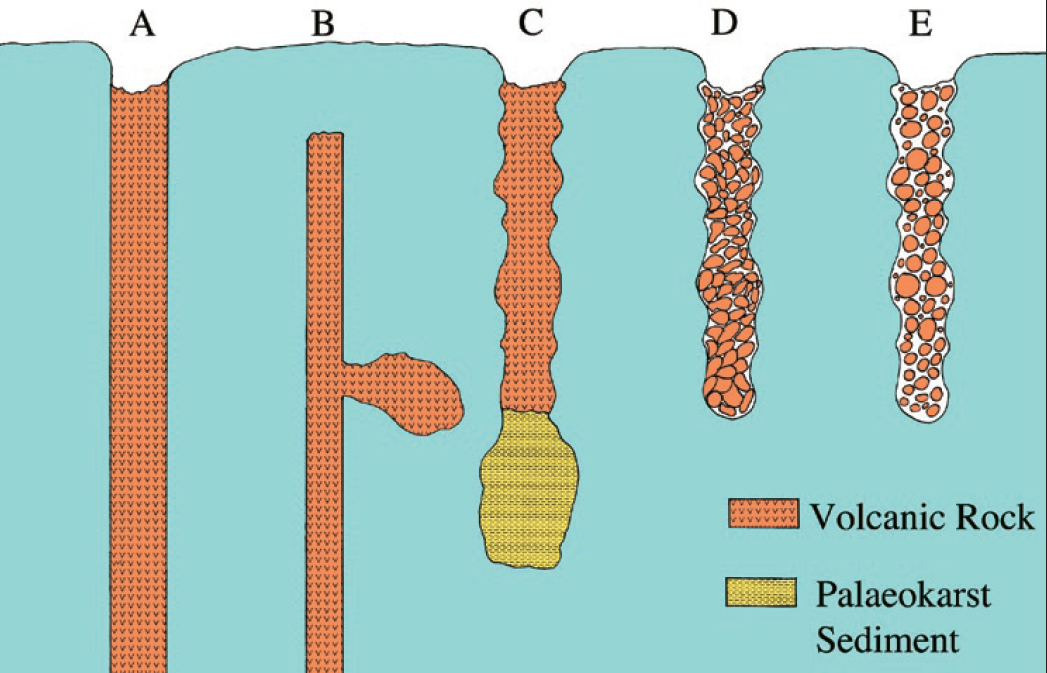Dating ancient caves and related palaeokarst
DOI:
https://doi.org/10.3986/ac.v34i1.279Povzetek
There are few cases of open caves that have been reliably dated to ages greater than 65 Ma. This does not mean that such caves are extremely rare, rather it is difficult to reliably establish that a cave, or palaeokarst related to a cave, is this old. Relative dating methods such as: - regional stratigraphic, lithostratigraphic, biostratigraphic, relative climatic, relative isotopic, morphostratigraphic, and regional geomorphic are very useful. They suffer however from significant difficulties, and their results lack the impact of a crisp numerical date. While many of the methods used to date younger caves will not work over the required age range, some isotopic methods and palaeomagnetic methods have been applied with varying degrees of success. While finding something to date and having it dated is difficult enough, producing the date is rarely the end of the story. The difficult issue is not the date or relative correlation itself, but what the date or correlation means. Demonstrating that caves are ancient seems to rapidly become beset with the old adage that “extraordinary claims require extraordinary proof”. The presence of a well-dated or correlated sediment in a cave does not necessarily mean that the cave is that old or older. Perhaps the dated material was stored somewhere in the surrounding environment and deposited much more recently in the cave. A lava flow in a cave must be demonstrated conclusively to be a flow, not a dyke or a pile of weathered boulders washed into the cave. It must be conclusively shown that dated minerals were precipitated in the cave and not transported from elsewhere. There seems little doubt that in the future more ancient caves, or ancient sections of caves, will be identified and that as a result our perception of the age of caves in general will change.
R.A.L. Osborne: Datiranje starih jam in z njimi povezanega paleokrasa
Je le nekaj primerov odprtih jam, ki bi imele zanesljivo določeno starost nad 65 milijonov let. To ne pomeni, da so take jame izredno redke, ampak da je težko zanesljivo ugotoviti, da so oziroma paleokras, povezan z njimi, res tako stare. Relativne metode datiranja, kot so regionalno stratigrafsaka, litostratigrafska, biostratigrafska, relativno klimatološka, relativno izotopska, morfostratigrafska in regionalno geomorfološka, so zelo uporabne. Imajo pa pomembne pomanjkljivosti, saj njihovi izsledki ne temelje na jasnih številčnih podatkih. Medtem, ko marsikatera od metod, ki so uporabne za datiranje mlajših jam, ni uporabna za omenjeno starost, pa je bilo uporabljenih več izotopskih in paleomagnetnih metod z različnim uspehom. Težko je najti snov za datiranje in jo datirati, a sama starost še ni konec zgodbe. Težava ni z datiranjem ali s korelacijo, ampak v tem, kaj starost oziroma korelacija pomenita. Dokazovanje, da so jame stare, je hitro odpravljeno s pregovorom »Izredni izsledki zahtevajo izredne dokaze«. Dobro datirani ali korelirani sedimenti v jami še ne pomenijo, da je jama toliko stara ali starejša. Morda je bilo datirano gradivo odloženo nekje v okolici in šele mnogo kasneje preneseno v jamo. Lavin tok v jami mora biti neizpodbitno določen kot lavin tok, ne pa da je dyke ali balvani, prenešeni v jamo. Neizpodbitno mora biti dokazano, da so bili datirani minerali izločeni v jami in ne preneseni od nekod drugod. Nedvomno bo v bodoče spoznanih več starih jam ali njihovih delov in zaradi tega se bo tudi naše pojmovanje o starosti jam v celoti spremenilo.
Prenosi

Prenosi
Objavljeno
Kako citirati
Številka
Rubrike
Licenca
Avtorji jamčijo, da je delo njihova avtorska stvaritev, da v njem niso kršene avtorske pravice tretjih oseb ali kake druge pravice. V primeru zahtevkov tretjih oseb se avtorji zavezujejo, da bodo varovali interese založnika ter da bodo povrnili morebitno škodo.
Podrobneje v rubriki: Prispevki




